- Interview
Precious Plastic at FabCafe Bangkok: Plastic waste as a new source for creative materials
For more information, please contact FabCafe Bangkok or MTRL.
by : Kelsie Stewart
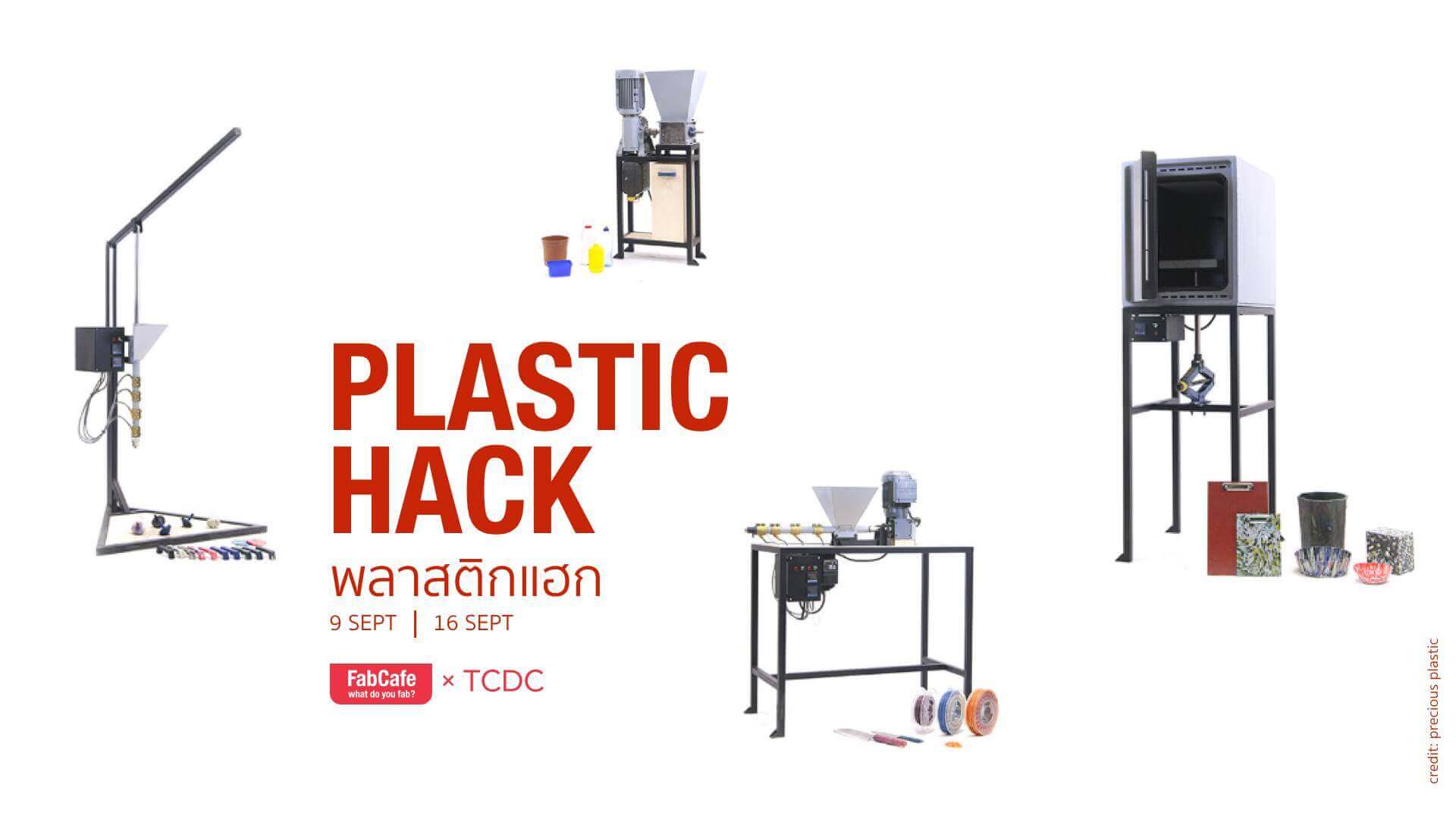
This is Kelsie Stewart, FabCafe Tokyo member and FabCafe Global Blogger.
The Precious Plastic machine opened for service at FabCafe Bangkok from Sunday, September 9th (2018). With these new machines, FabCafe Bangkok is making an open call for people who want to fight plastic pollution by using plastic waste as a new source for creative materials. To find out more about these machines and their potential, I interviewed FabCafe Bangkok Founder, Kalaya Kovidvisith.
FabCafe Bangkok Founder, Kalaya Kovidvisith
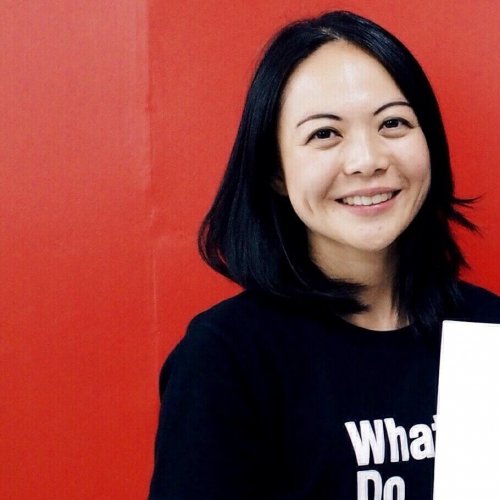
─── Hi Kalaya, thank you for joining me today. Can you tell me about the Precious Plastic machines at FabCafe Bangkok?
Kalaya Hi, Kelsie! So, there are 4 machines: the shredder machine, extrusion machine, injection machine and the compression machine. These machines work together to shred, melt and inject recycled plastic into a mold so the plastic can be reused as a different product.
We first got into the idea of these machines because we felt like we had a lot of plastic waste at FabCafe Bangkok and we really wanted to recycle it. I had a positive meeting with the Precious Plastic team members before, so we thought the precious plastic machines would be a good addition to our machines collection. Even though the costs have recently come way down, it is still normal for many of the machines we use in our space to be expensive and difficult to use. The Precious Plastic team has made their machines comparatively very cheap and easy to build and use.
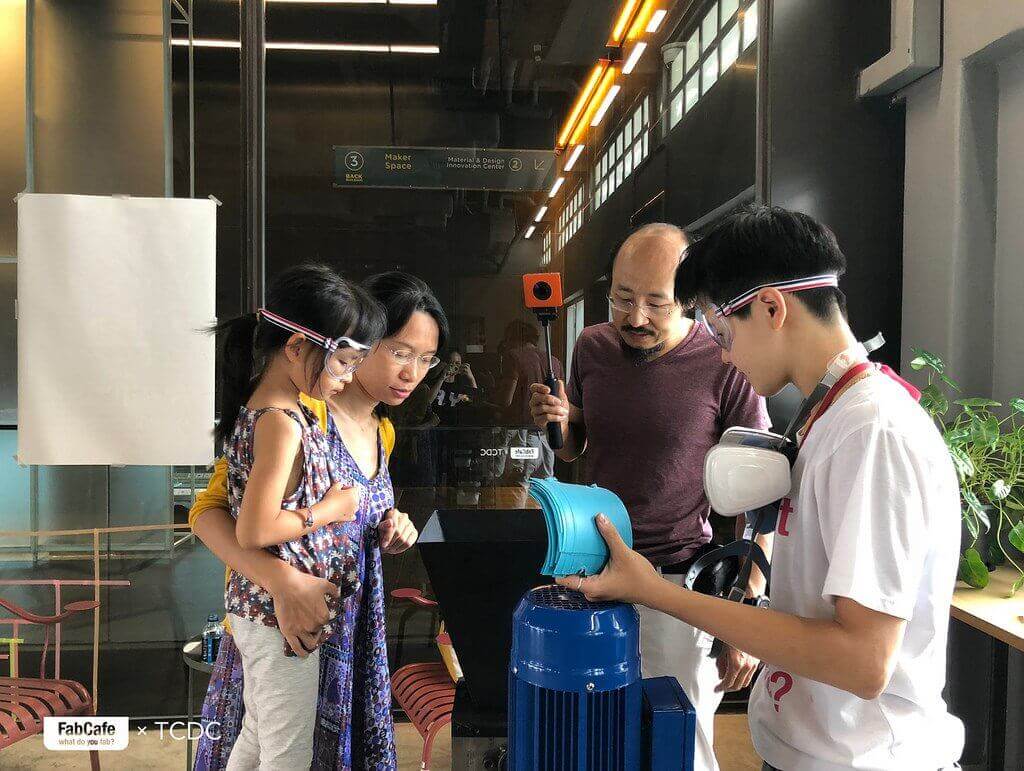
Making moves in the upcycling plastic movement at FabCafe Bangkok.
Plastic Upcycling Basics
─── What kind of plastics can you use in the different machines?
Kalaya There are 7 types of plastic in the market; we upcycle PP (bottle caps), HDPE and LDPE. The identificatory information for the different plastics are clearly labeled on the original plastic objects so we can tell which are which fairly easily.
The general idea between all four machines is that they can transform plastic waste by turning it into ingredients to make other things. When making these ingredients, practical points are important. For example, plastics bags cannot be used in the shredder because they are very thin and therefore difficult to shred. Instead, you can put them into the compression machine to be melted. Also, the shredder itself has size limitations. We must cut make large plastic pieces into small pieces, then put those into the shredder to make it into even smaller pieces so that when it is later heated, it will be easier to melt and then later put into a form to create a final product.
All but the shredder use very hot temperatures to melt the plastic therefore users must also need to understand what temperature is needed for each plastic type. 270°C will melt most of plastics but some of them might react better to 230°C or 290°C. This is something users have to learn over time by using the machine.
─── Can you tell me about the plastics you are using and the safety precautions that need to be taken when recycling plastic?
Kalaya To use the machines safely, people must first understand the different qualities of materials. Learning about the different plastic is really important so we teach everyone who wants to use the machines how to differentiate each plastic and which plastics can and cannot be safely recycled using the machines.
The 3 plastics we are using are the least toxic of all plastics. While these three plastics are safe for us to work with, the other more dangerous plastics require special machines to treat the toxic air created during melting to make it safe for humans. It’s better to send these especially toxic plastics to be treated at large factories instead of using them for upcycling. To those who are interested in building their own precious plastics machines, we recommend to only use the machines in a highly ventilated space, like we are now here in FabCafe Bangkok.

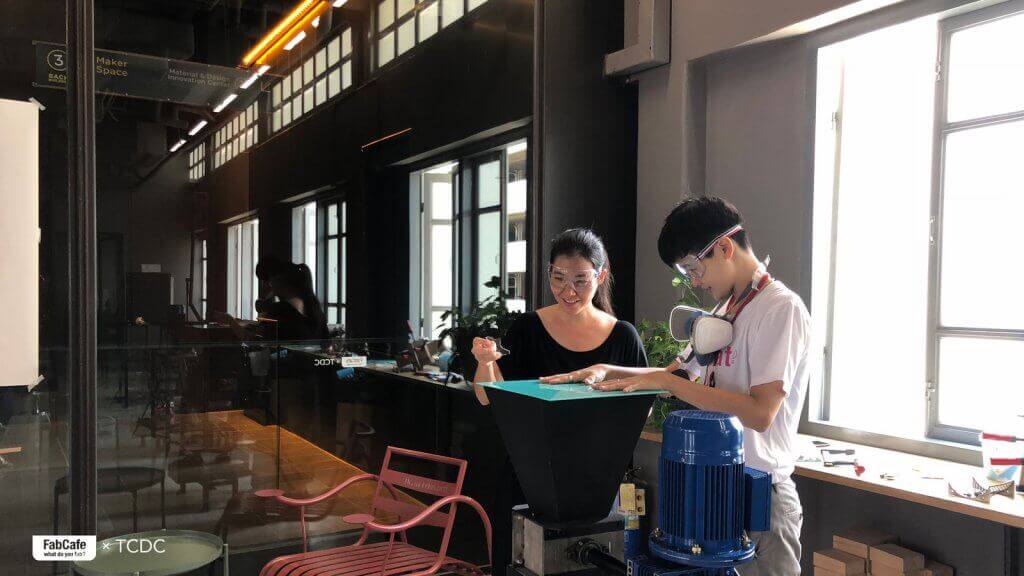
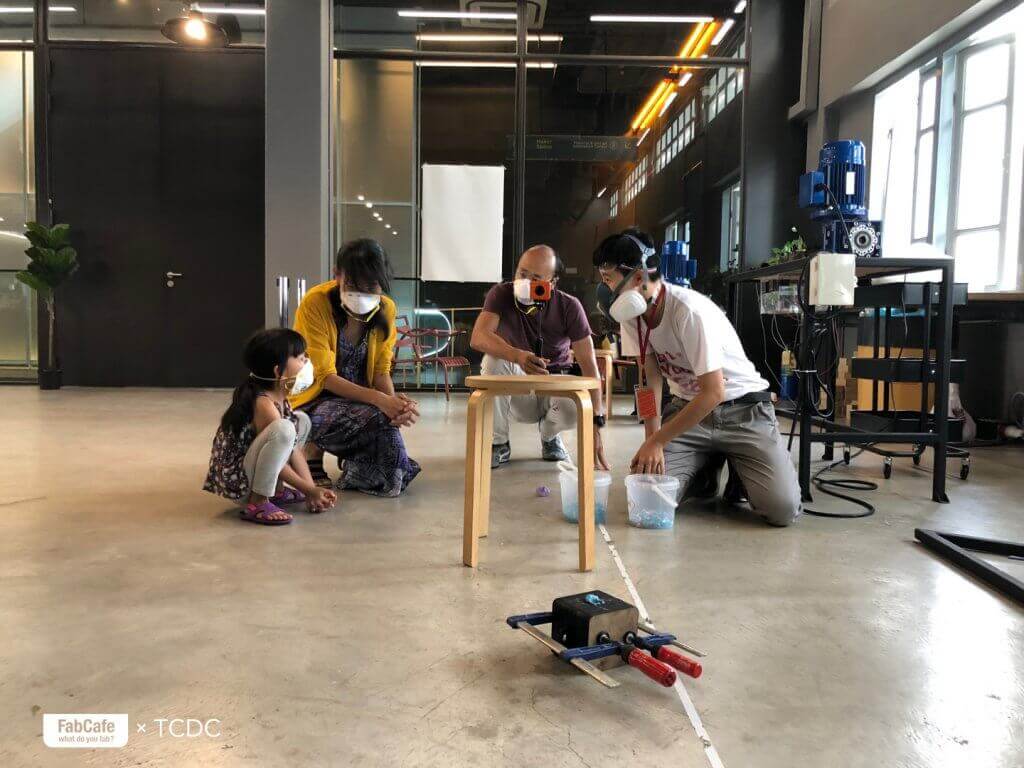
An Upcycling Plastic Ecosystem
─── How do you gather all the plastic necessary for upcycling?
Kalaya First, we used the plastic waste being created at FabCafe but that was not nearly enough! Once we realized need more plastic to shred and melt than we produced, we solicit our communities to ask people to send us their plastic waste.
Our first attempt of this solicitation was through Boonrawd Brewery Co., Ltd.. They were able to provide some plastics but we must have clean plastic and to clean their plastic took quite a bit of time so we reached out further to find clean plastic.
In our second outreach, we started going to the bigger corporates. In Bangkok, organizations such as banks have their own water bottles with their brand on the cap.I went the all the nearby banks and asked them to collect the water bottle caps for us to collect. At this time, we unfortunately cannot use the PET bottles themselves but we are now receiving many caps from the banks.
We were also able to get bottle caps from the Thailand beer company, Tsing as well. Tsing also sell water bottles and sometimes they have caps that cannot pass quality control in the factories and so we can receive these flawed caps. Another place we can go to is the plastic injection factories to ask for their leftover plastic. It takes an entire ecosystem in order to organize, collect, and clean the plastic to use in the machines.
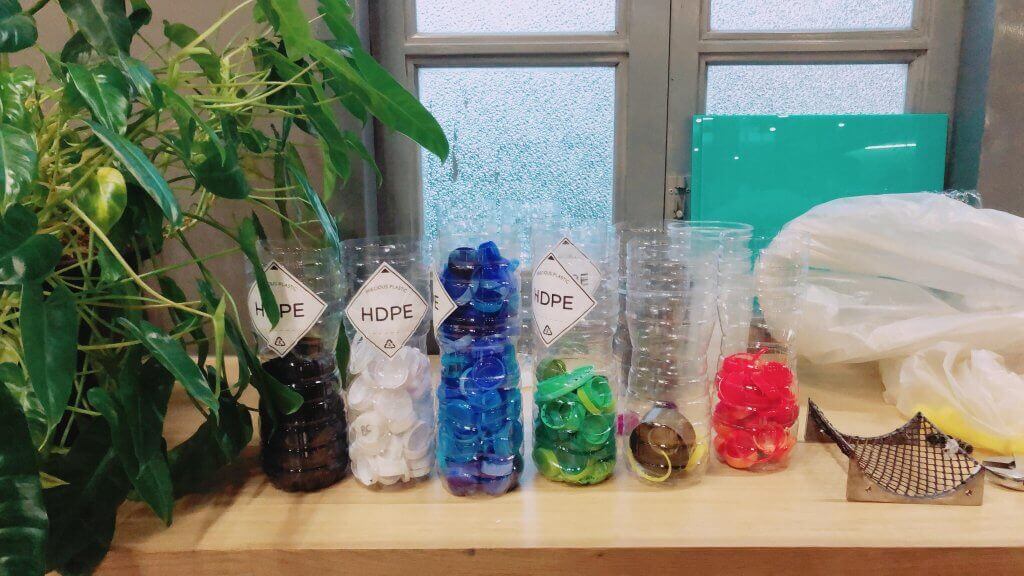
It takes an entire ecosystem in order to organize, collect, and clean the plastic to use in the machines.
─── What events have you done with the Precious Plastic machines so far?
Kalaya Our first event was called Plastic Gems. This workshop gave us an opportunity to explore the potential of the machines. We made some small items, like a ninja star and a top, and some kids also came! When we finished this class, and when we finish all Precious Plastic machine classes, we asked people to think about sustainability.
Right now, we need to change the general public’s attitude and image of plastic waste. When we say “upcycling”, most people’s first thought is that the final product is cheap. We want to change this image of plastic waste to it being like rock in the mountain or a diamond in the rough. We need to take it back and turn it into a material for making. We are going to have plastic waste from here on out, in the sea and everywhere, so we need to start considering it a innovative 20th century material. Plastic can last for up to 400 years so we want to treat it as preciously as the stones used in jewelry. If we can turns people’s thinking about upcycled plastic on its head, people will open their mind to its’ true potential. Plastic is flooding the world and if we can develop a creative community to create new value for plastic waste, we can reduce the use of virgin plastic (new plastic).
We are going to have plastic waste from here on out, in the sea and everywhere, so we need to start considering it a innovative 20th century material.
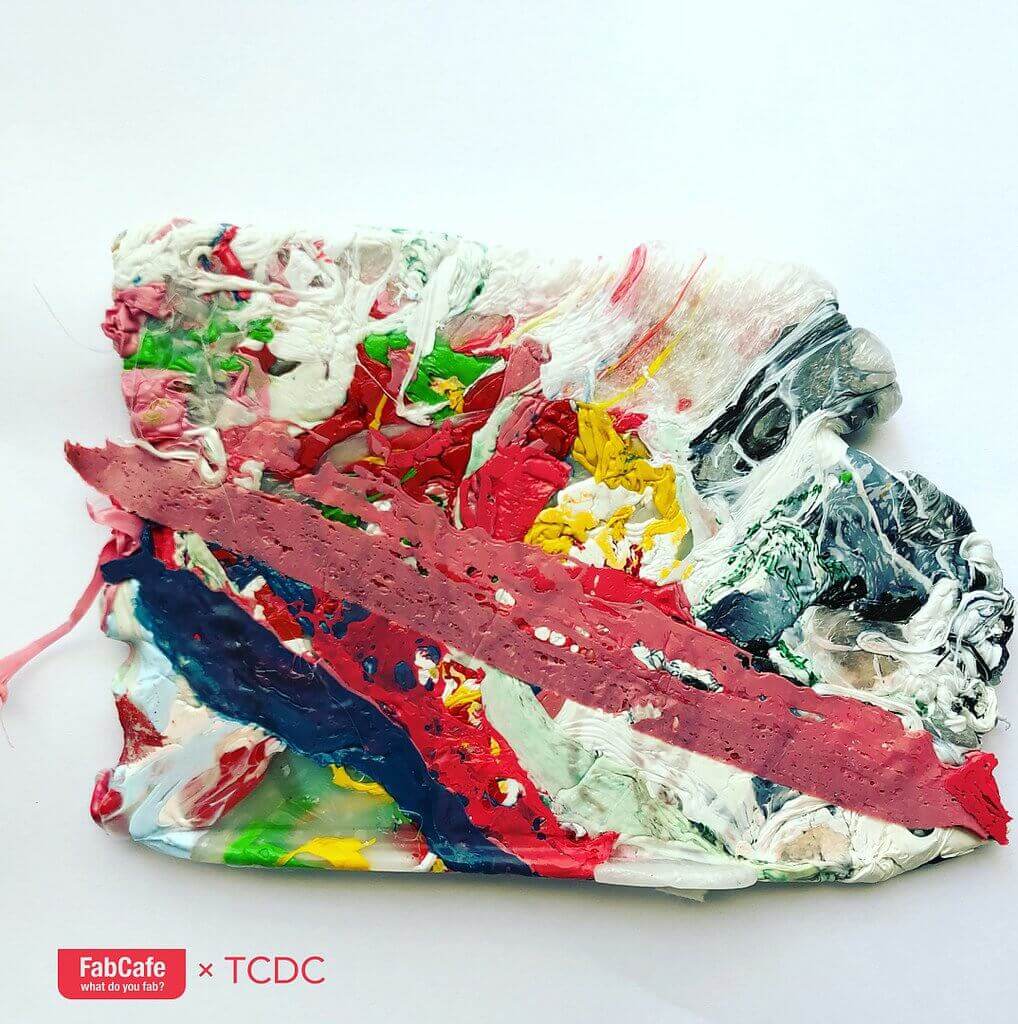
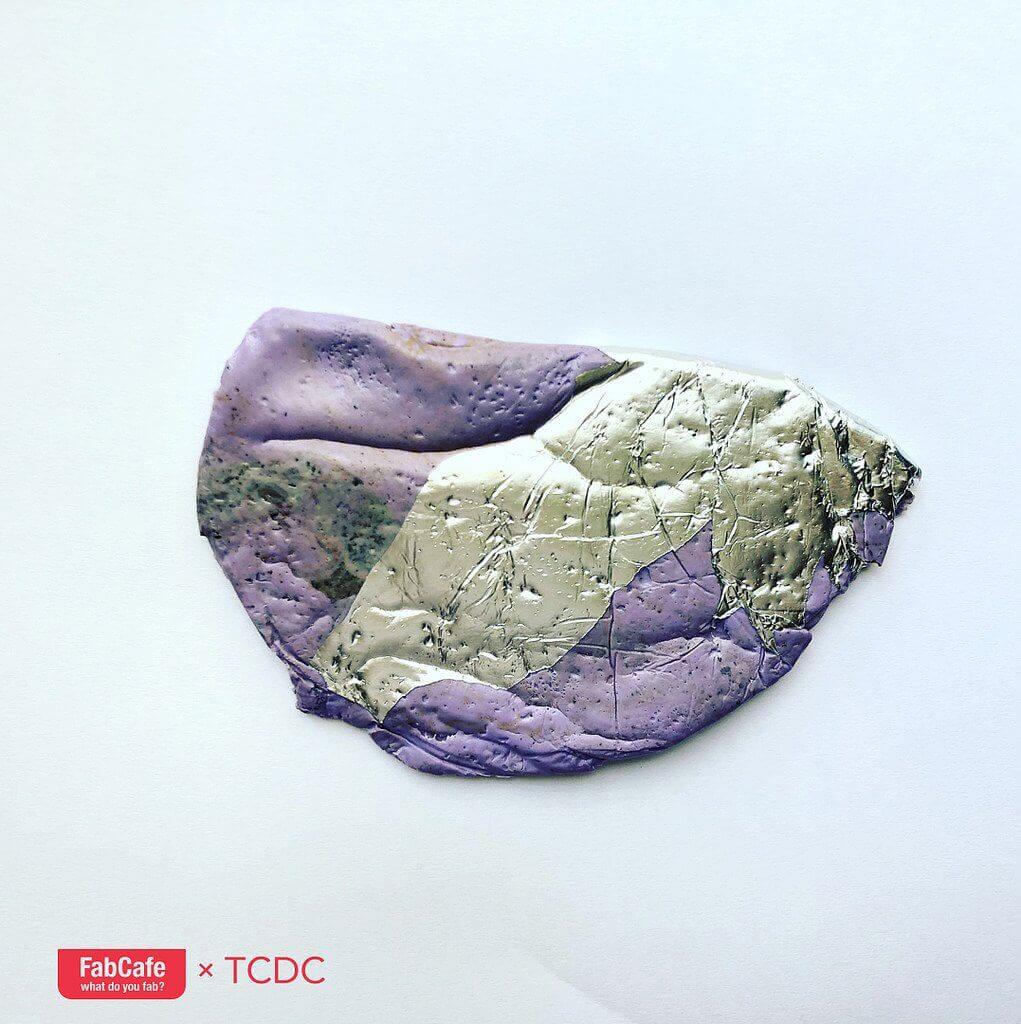
The Plastic Hack Workshop
─── Wow! So, it’s now just about learning about the machines and how to use them; it’s about changing our entire plastic waste worldview. At this point, it almost seems a waste to even call it “waste”. Moving forward, can you tell me the direction you are heading?
Kalaya We are currently hosting a monthly one-day Plastic Hack Workshop to teach people about the machines and how to upcycle plastics. We are highly encouraging designers, creators, or people who want to make a business out of plastic waste to collaborate with us. We think the machine will create more impact if we can design a product that can help reduce the amount of plastic waste in the market. If a creators can do this, we let them use the machine for free (for now). We hope that by encouraging people to get to know the plastic better, they can design better products using it.
Recently, we were able to do a variety of fun gift-making Plastic Hack workshops using upcycled plastic at the ‘Gift to the Circular Living Festival’ FabCafe Popup (November 20, 2018, at the Siam Discovery Centere). We created fun multi-colored stools using the bases of old chairs, earrings, keychains, and watch faces.

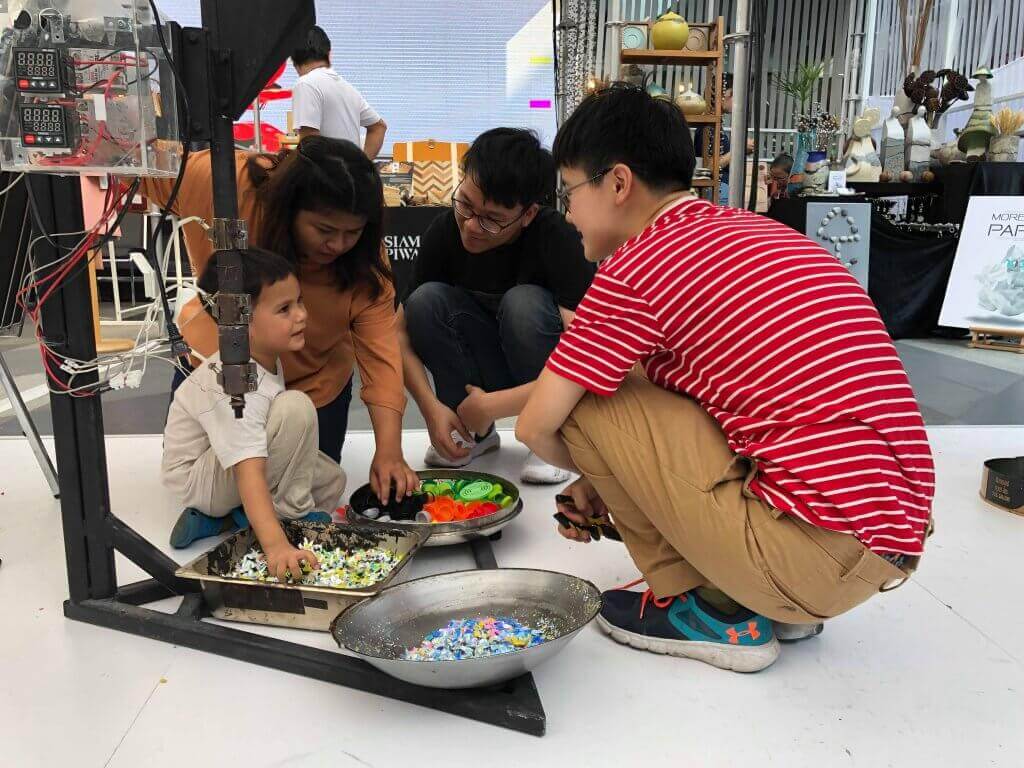

─── Beautiful! For our readers, I have one last question- how can people get in touch to use the machines and take part in the precious plastic movement at FabCafe Bangkok?
Kalaya We accept all inquiries through out FabCafe Bangkok Facebook page! If you don’t use Facebook, time can also be reserved by phone, 0836199983. In the future, we also plan to have workshop for architects as well! New projects are popping up rapidly so best to check out the Facebook page for upcoming workshops.
Recent Articles
-
Interview
Creating the “New Normal” for the Future: What is the “Complexity” Necessary for Co-Creation Between Academia and Industry? An Interview with Professor Kouta Minamizawa (Part Two)
-
Exploring New Realms of Design with Academia – An interview with Professor Kouta Minamizawa about the potential of co-creation projects with Academia -(Part One)
-
REPORT:School of Fashion Futures
